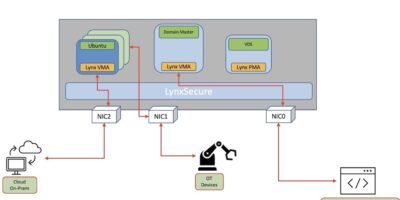EBV Elektronik has signed a distribution franchise agreement for the EMEA region with Hailo, the Israeli AI chip maker, which has a range of AI accelerator and AI acceleration modules.
Hailo’s AI accelerators include the Hailo-8 AI processor which features up to 26T operations per second (TOPS) at a typical power consumption of 2.5W. It enables edge devices to run sophisticated, deep learning applications at scale, said EBV.
The company also offers M.2 and Mini PCIe high-performance AI acceleration modules.
Hailo’s products connect to board-level platforms via the PCIe interface. This allows for high-performance and power-efficient AI when used with the Intel / AMD x86 or the Raspberry Pi Compute Module 4, or Arm-based processors, from NXP Semiconductors, STMicroelectronics and Renesas, said the distributor.
The MicroSys Electronics miriac AIP-S32G274A embedded system on module (SoM), which is based on NXP processors is another example of a product which supports Hailo-8 AI acceleration modules.
“This agreement with EBV is a major opportunity for our AI technology to gain greater penetration across Europe and beyond, in a range of markets including industry 4.0, automotive, smart retail, smart cities, and smart home applications,” said Orr Danon, CEO of Hailo.
“Hailo’s technology is at the cutting edge of AI and deep learning applications,” said Susanne Betting, senior director Supplier Marketing at EBV Elektronik. It will complement EBV’s existing AI portfolio.
EBV Elektronik is an Avnet company. It was founded in 1969 and specialises in European semiconductor distribution. EBV maintains a personal commitment to customers and services with 240 Technical Sales Specialists which provide a strong focus on a selected group of long-term manufacturing partners. There are also 120 continuously trained Application Specialists which offer extensive application and design expertise.
The company also operates the EBVchips Program, to define and develop new semiconductor products.
Warehouse operations, logistics and value-added services such as programming, taping and reeling and laser marking are fulfilled by Avnet Logistics.
EBV operates from 65 offices in 29 countries throughout Europe, the Middle East and Africa (EMEA).







